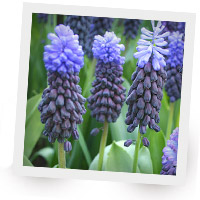Deer, rabbits, squirrels, chipmunks, moles, voles and groundhog can cause us problems in our gardens. There is not one special trick to keep them all away. There are a few pest control options: barriers, sensory deterrents, or vegetative deterrents. Try any of the options below, depending which animals seem to be problematic for you.
Barriers
Barriers are the most straightforward and many say the most effective deterrents.
A deer fence should be at least seven and a half feet high, and the most effective deer fence is a double fence. For groundhogs/moles/voles, fences need to be about three feet deep. Chicken wire is another favorite barrier material. This can be used to form a cage over young plants, or an underground cage in which to protect bulbs from burrowers. It’s perfectly acceptable to place a sheet of chicken wire right on top of the planting. Some like to just throw on an old window screen after planting to keep the squirrels out and take it up once the ground has settled or frozen.
Sensory Deterrents
Sensory deterrents seek to annoy or repel the unwanted garden diner by offending his sense of smell or taste or exciting his sense of fear and caution.
Suitable deterrents for squirrels/rabbits/chipmunks and deer include: scattering clippings of human hair or Predator urine (from lion or coyote can be found at retail stores), or rotten egg mixtures, or Irish spring soap hung around the edges of the garden.
Vegetative Deterrents
The idea behind vegetative deterrents is to surround the plants with other plants that these animals do not like.
For Deer: thorny things, Fritillaria imperialis, anemones, astilbes, junipers, foxgloves, daffodils, ferns, grasses, etc. Squirrels/rabbits/chipmunks won’t eat daffodils or other narcissi bulbs or Fritillaria imperialis.


















